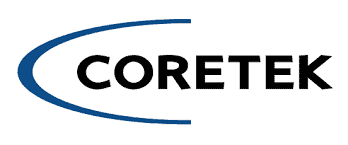Simply IGEL It
IGEL is a transformative secure endpoint OS designed for SaaS, DaaS, VDI and secure browser environments. IGEL significantly reduces endpoint TCO and your endpoint attack surface.


A defense contractor with whom Coretek has had a long-standing relationship spanning nearly two decades had attempted to migrate to a virtual desktop infrastructure (VDI) environment twice with another technology services provider without success. The customer had three use cases: knowledge workers; transient users, including field service workers, who utilize a shared workstation and require only lightweight applications; and power users, which represent the primary use case.
In implementing VDI, the customer needed to address a couple of challenges. The first was providing all use cases with seamless access to popular communication and collaboration tools and applications on the desktop, including Microsoft Teams, Cisco WebEx, and Zoom.
“Today’s modern videoconferencing platforms require high-quality endpoint hardware. Because end users wanted to continue to use the tools and applications they had become comfortable with while working remotely during the pandemic, it became imperative that we identify a solution that would support these requirements as they returned to the office,” said Ryan Hinkleman, Senior Solutions Architect, Coretek. “We needed a vendor that could help us maintain the capabilities of various unified communication tools and applications while keeping pace with innovation in the industry.”
Next, the customer wanted to customize desktop images with minimal restrictions for power users in different departments such as supply chain, finance, and IT. For example, the engineering department heavily relies on graphics acceleration to efficiently run applications like Teamcenter rand Creo. In implementing VDI, they needed to prioritize core design functions while also allowing for flexibility to meet individual user requirements without sacrificing efficiency.
Impressed by Coretek’s success with VDI implementations in healthcare and other industries, the defense contractor turned to their expertise for its own VDI deployment.
“IGEL is an integral part of our onpremises VDI offering that uses Nutanix in combination with Citrix VDI to move Windows off the edge and into the cloud and deliver secure end user access to virtual applications and desktops.” said Brian Barnes, Chief Technology Officer, Coretek.
Today, IGEL OS, due to its leadership in this space, has largely become Coretek’s standard for new customer VDI rollouts. “We have a defined approach to VDI that we apply across all vertical industries and that incorporates marketspecific requirements,” said Brian Barnes. “IGEL is an integral part of our on-premises VDI offering that uses Nutanix in combination with Citrix VDI to move Windows off the edge and into the cloud and deliver secure end user access to virtual applications and
desktops.”
The Coretek VDI offering has undergone several iterations over the years and has been refined to better support today’s power users. “The growth of the power use case is due in part to the introduction of Windows 10, and now the migration to Windows 11, as well as the expansion of our customers’ application stacks,” noted Hinkleman.
Prior to leveraging IGEL, Coretek was using Dell as the framework for delivering desktops and applications to the endpoint. “Dell was favored by a government-contracted technology vendor we were working with on this project,” Hinkleman explained. “For almost a decade now, we have been collaborating with IGEL and during this time, they have established themselves as a significant player in the main vertical markets we cater to, including healthcare, which is an area where we have seen a lot of innovation happening over the last few years.”
One of the things that the Coretek team appreciates most about IGEL OS is its high level of configurability, as well as IGEL’s commitment to staying current with trends in the EUC space by aligning IGEL OS with a broad ecosystem of leading vendors, including those providing unified communications and collaboration (UCC) applications and tools.
In this particular case, IGEL OS, in combination with new endpoint hardware manufactured by Dell, enabled Coretek to restore performance following a significant shift in the customer’s usage of its UCC tools. “With IGEL OS, we delivered a seamless experience to the end user, including support for multiple monitors, specialized mice, keyboard combinations, and even smart cards, which are widely used across the government sector, all set to desired configurations within a VDI environment. IGEL has been crucial in helping us achieve and maintain these configurations,” said Hinkleman.
He added, “IGEL offers users the flexibility to choose the best endpoint form factor for their needs, whether it’s a laptop, a traditional thin client, or their own preferred hardware. In this deployment, we were able to repurpose decommissioned laptops using IGEL OS. This provided users with added mobility, especially in cases where they previously had to connect to their desktops and applications remotely using a PC.”
Coretek’s VDI solution has been deployed to approximately half of the customer’s 6,000 employees. “The customer is currently utilizing high-performance VDI desktops, leveraging IGEL OS at the endpoint, for the design of defense equipment and to support connectivity and collaboration through video conferencing,” remarked Hinkleman.
IGEL’s Preventative Security ModelTM supports Zero Trust security approaches and partners with leading Secure Access Service Edge (SASE) vendors to complement and re-enforce those solutions. “IGEL met all of our customers’ security requirements due to its ability to remove the attack vectors exploited by bad actors for ransomware and other cyber-attacks,” Hinkleman said.
According to Hinkleman, “IGEL helped simplify the management of our IGEL OS-powered endpoints us by providing updated versions of its software, completing much of the necessary development work to keep up with the changes the application developers were making, and offering valuable insights for integrating and delivering our UCC appli- cations via IGEL OS, directly on the endpoint. The IGEL team also provided performance guidance and configuration support so we could align more quickly with the rapid changes in these applications and adapt them more quickly for VDI environments.”
The benefits of using IGEL OS for delivering video conferencing and collaboration over VDI include improved efficiency. Normally, in a VDI environment, video in Microsoft Teams or Zoom would be processed in a data center and then displayed on the user’s endpoint device. Directing video and audio streams straight to the IGEL endpoint and bypassing the VDI is more efficient, as it only involves a metaphorical handshake between the IGEL endpoint, the VDI, and the video conferencing application to ensure direct streaming to the endpoint. However, while this approach provides a seamless user experience, it places higher performance demands on the endpoint. Therefore, it is essential to closely manage version compatibility among the endpoint, VDI, and application to ensure smooth operation.
The customer has power users that utilize GPU acceleration to run various application sets and perform tasks like masking, which involves hiding or obscuring parts of an image. This allows for customized images based on user requirements and ensures they can be adapted for supply chain, finance, IT, and other departments with minimal restrictions. “When using VDI with IGEL OS, we can help the customer simplify operations in the background by standardizing the image and sizing. This allows them to scale successfully, even with multiple groups using it,” explained Hinkleman.